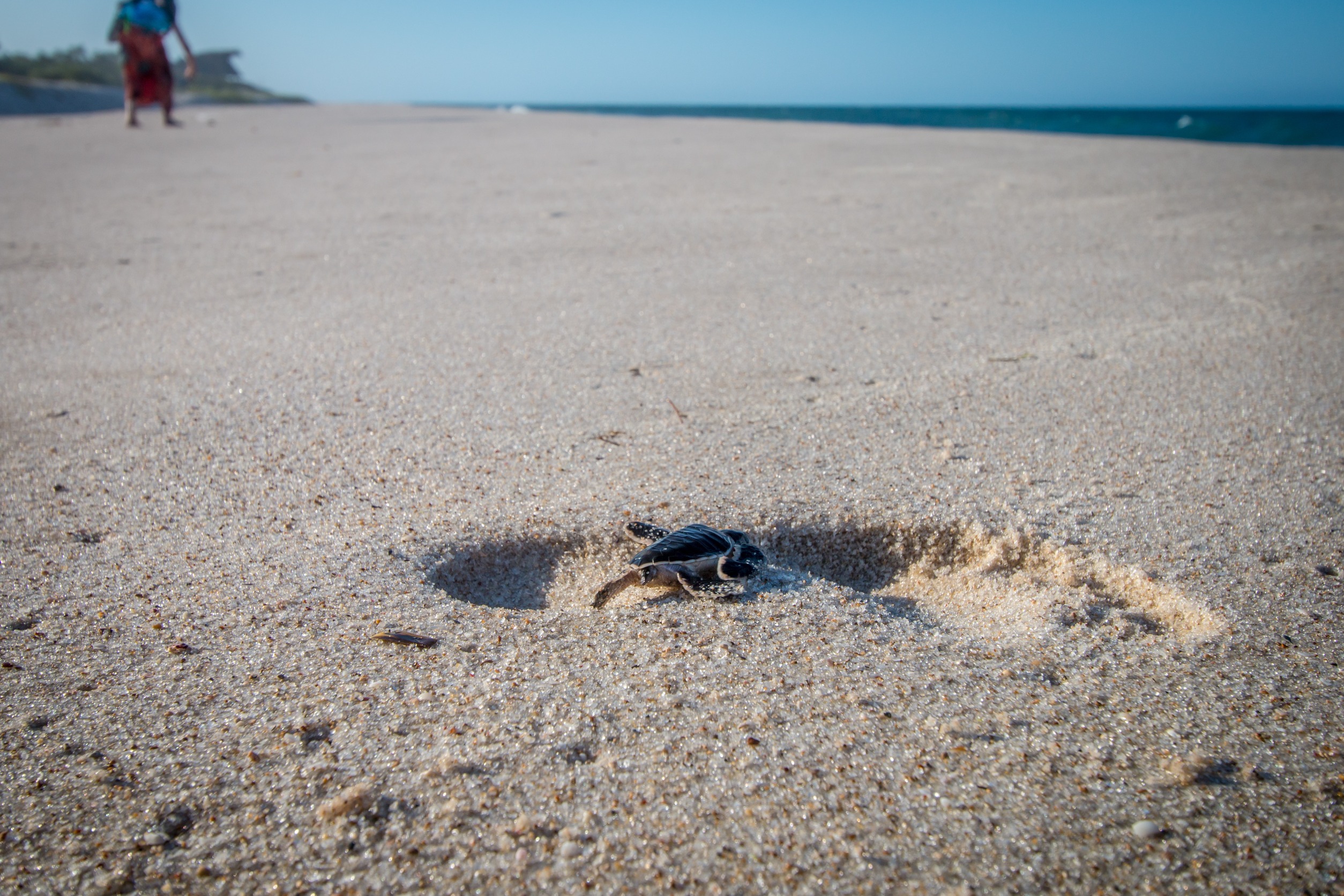BY THE OPTIMIST DAILY EDITORIAL TEAM
After decades of tireless conservation efforts, the endangered Caretta caretta sea turtle is making a spectacular recovery on Greece’s coastlines. This ancient mariner, which has been around for over 100 million years, was nearly extinct due to human activity and environmental threats. Conservationists’ efforts led to a record number of sea turtle nests in Greece, marking an enormous triumph for wildlife preservation.
The return of an ancient mariner
Something amazing has been happening on the sandy beaches of Sekania on the Ionian island of Zakynthos, which is the largest nesting place for loggerhead sea turtles in the Mediterranean. Charikleia Minotou, the WWF program manager in this protected area, has monitored loggerhead turtles for nearly 25 years. Her discoveries are nothing short of amazing.
“The message sea turtles are sending is very clear,” says Minotou. “The measures we have taken over the past 25 years to ensure conditions are right for the marine turtles to nest here are working … It’s fantastic.”
This year, more than 1,200 nests have been discovered on the beach—an incredible number, with one nest per 50 cm. Minotou and her crew have seen record numbers of both nests and surviving hatchlings, indicating a remarkable rebound for the species.
Conservation wins in the Mediterranean
The Mediterranean region has seen an extraordinary increase in sea turtle nesting numbers, from Spain to Cyprus. This recovery is the consequence of a coordinated effort by conservationists dedicated to saving the species. Although only one in every 1,000 sea turtle hatchlings survives to adulthood, the number of nests is increasing, demonstrating the effectiveness of these conservation programs.
Greece, which contains 60 percent of the Mediterranean’s loggerhead turtle nests, has seen the most dramatic recovery. According to Archelon, the Sea Turtle Protection Society of Greece, the average number of nests each year has increased from 5,000-7,000 to more than 10,000 since 2023.
Dr. Aliki Panagopoulou, research coordinator for Archelon, explains the significance of this increase: “Throughout the 2000s, we were registering annual declines of about six percent on Crete, for example. Now we are looking at a dramatic increase in nest numbers, the result of decades of conservation efforts.”
These efforts have centered on getting as many hatchlings as possible into the water, giving them the highest chance of survival.
Early challenges in sea turtle protection
The success of these conservation programs did not come easily. Thirty years ago, Greek authorities mostly neglected the plight of the Caretta caretta, putting the species on the brink of extinction. Human activities, particularly the expanding tourism industry, posed a significant threat to turtles. Speedboats, beach equipment, and an increase in people all interfered with crucial hatching locations.
Few people understood these early battles better than Lily Venizelos, the founder of the Mediterranean Association to Save Sea Turtles (Medasset), based in the United Kingdom. In the 1980s, she aggressively advocated for legislation to protect turtles. “I spent years when they were endangered running around different ministries with pieces of paper because back then no one cared to listen,” Venizelos says.
The loggerhead turtle population’s comeback encourages Venizelos, now in her nineties. “It’s been the most wonderful news, at my age, to find out that the Caretta caretta are no longer so threatened,” she declares. However, she emphasizes that the fight is far from done. “It’s crucial protective measures continue to be enforced. One false move and everything could be lost.”
The new threats to sea turtles
Despite positive advances, sea turtles in the Mediterranean still confront major obstacles. The region’s expanding tourism economy could jeopardize conservation efforts. Greece, which hopes to attract 40 million tourists by 2028, has seen an increase in “last-chance tours” offered to travelers who want to visit sites threatened by climate change and excessive tourism. Venizelos describes this trend as “catastrophic” for sea turtles, as the influx of visitors endangers fragile marine habitats.
“On the one hand, the EU wants to protect the species and, on the other, organizations are taking tourists on these ‘last chance’ tours,” Venizelos says. “It makes no sense at all.”
In addition to tourism-related pressures, additional dangers such as climate change, overfishing, pollution, and plastic waste are increasingly endangering sea turtles. Conservationists are working to fight these threats, but they warn that their progress might be jeopardized without ongoing support and enforcement of protective measures.
Nadia Andreanidou, Medasset’s programs and policy officer, underscores the need for ongoing vigilance: “There’s no doubt that across the Mediterranean, the increase in the Caretta caretta population is a nature-based reaction to all the conservation efforts of NGOs over the last few decades. But now, more than ever, we need the support of the government to implement the laws we have pushed for if we are to build on the momentum and keep this extraordinary animal out of danger.”
A bright future for sea turtles—if we stay the course
The resurgence of the Caretta caretta sea turtle demonstrates the strength of prolonged conservation efforts. Record nesting numbers in Greece and throughout the Mediterranean bring optimism for the future of this iconic species, but the task is far from over.
Minotou, Venizelos, and Andreanidou all underline the importance of maintaining vigilance and taking action to protect the loggerhead turtle’s long-term survival. With the correct regulations in place and dedication to safeguarding marine habitats, the Caretta caretta can continue to thrive.











